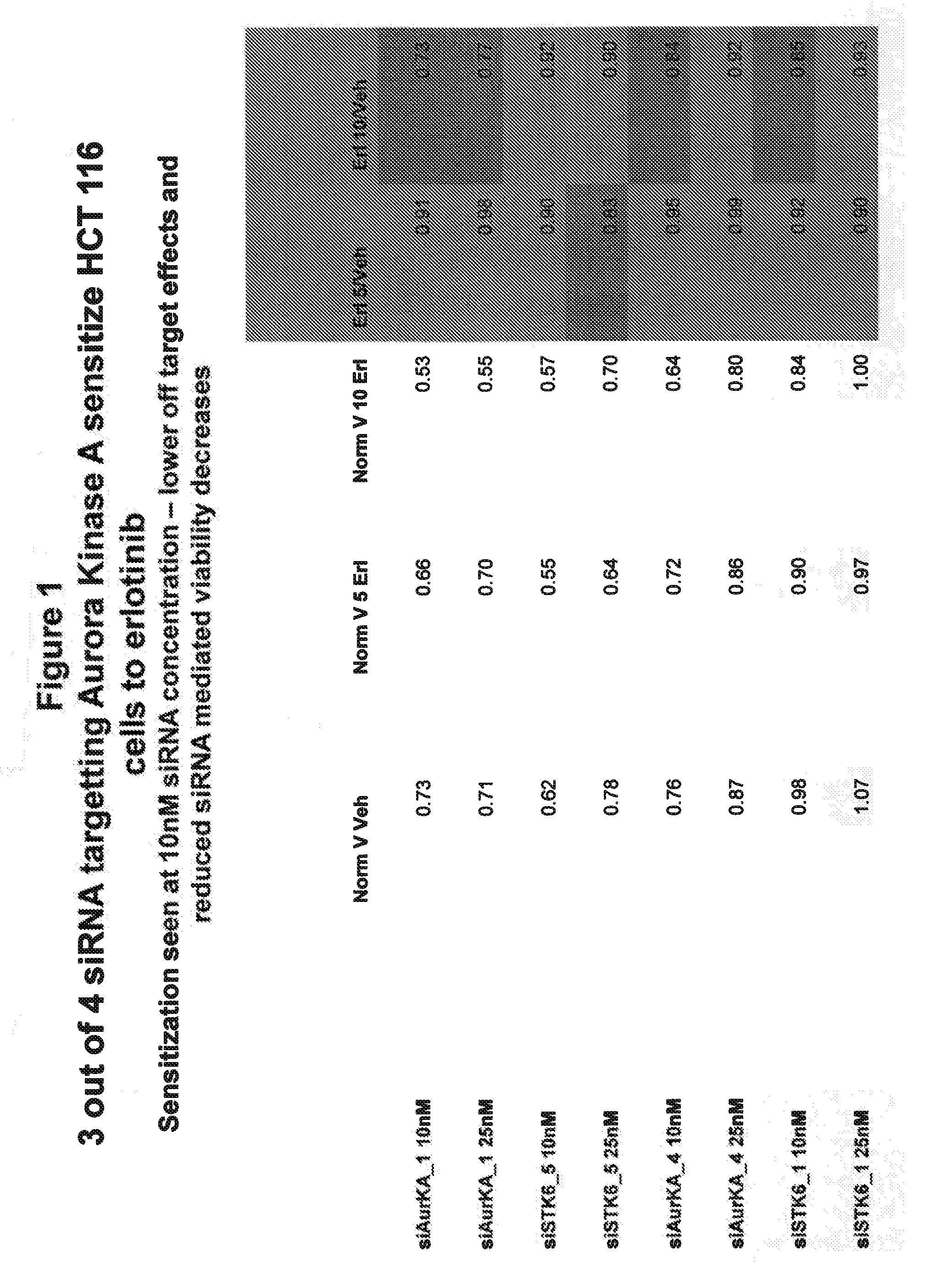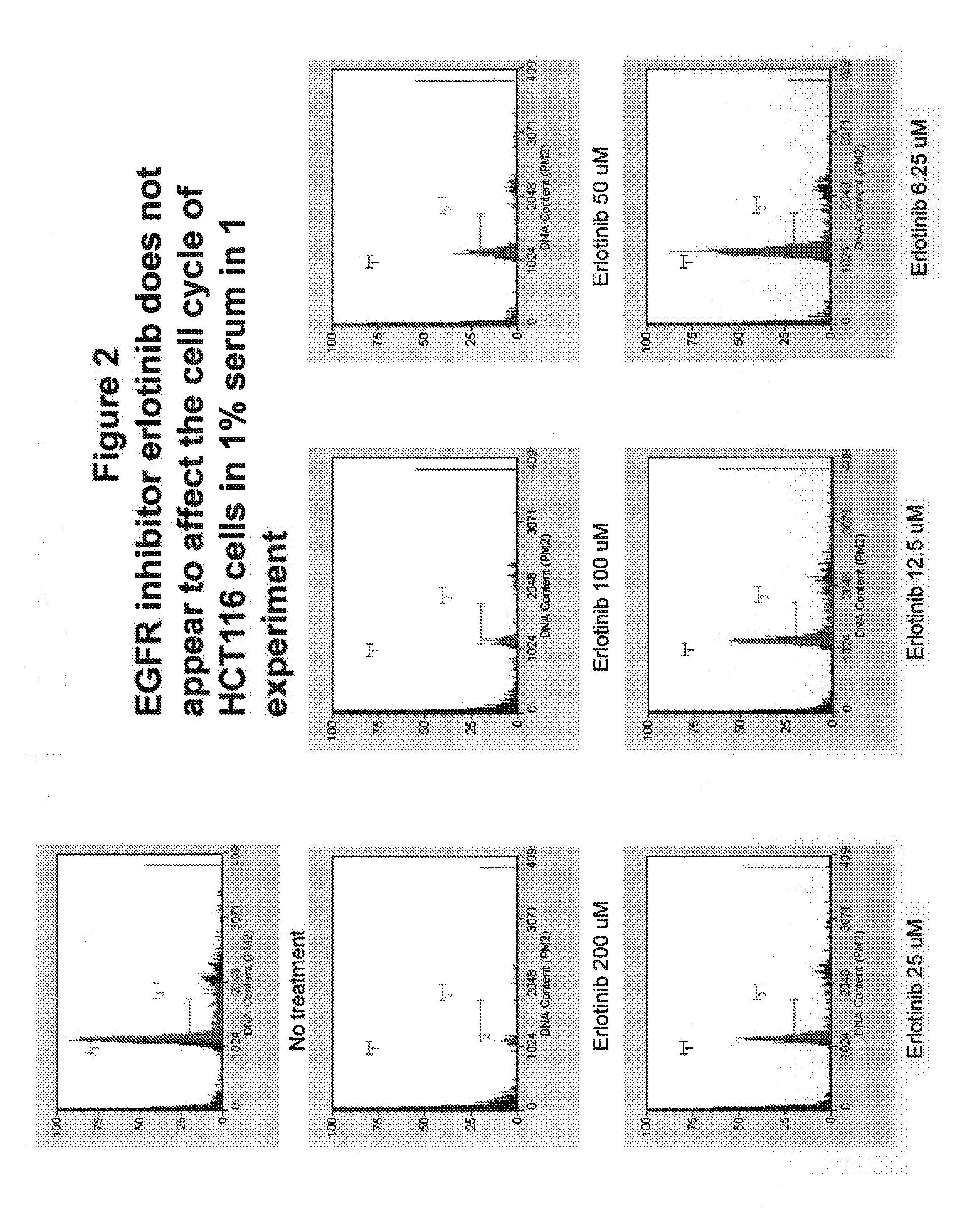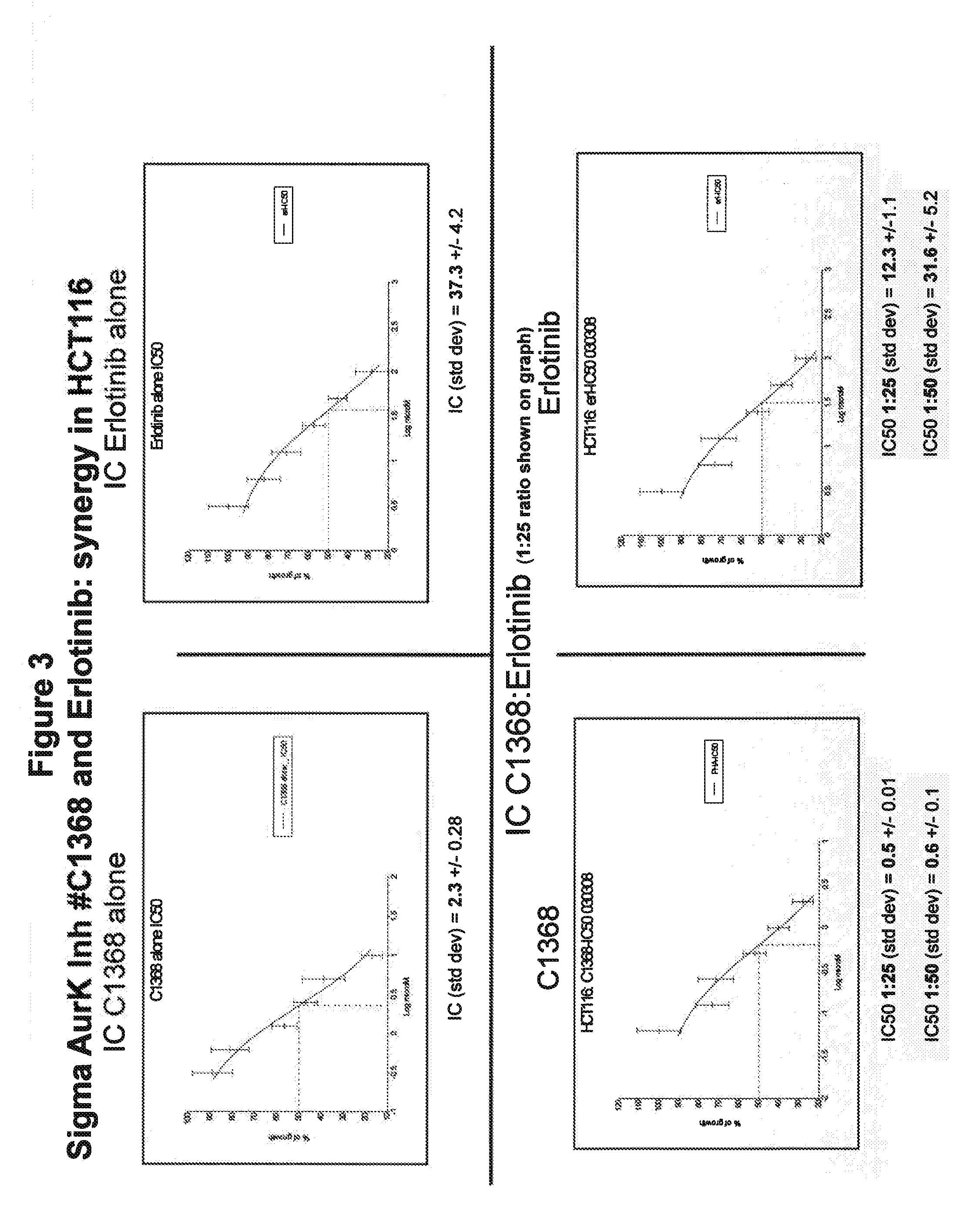Combination Therapy for the Treatment of Cancer
a cancer and combination therapy technology, applied in the field of drug discovery and oncology, can solve the problems of limited number of effective treatment regimens that are not overly toxic to patients, and the cancer has yet to be eradicated, so as to avoid antagonism, improve treatment effect, and avoid side effects
- Summary
- Abstract
- Description
- Claims
- Application Information
AI Technical Summary
Benefits of technology
Problems solved by technology
Method used
Image
Examples
example i
Inhibitors of Aurora Kinase and EGFR Act Synergistically to Inhibit the Growth of Cancer Cells
[0033]Aurora Kinase, plays an important role in mitotic chromosomal segregation and division and a variety of small inhibitory molecules targeting this enzyme are currently in clinical trials. Erlotinib (Tarceva, Genentech) is a small molecule inhibitor of EGFR tyrosine kinase. It has been FDA approved for the treatment of chemotherapy-resistant non-small cell lung cancer, and as part of a combination therapy for the treatment of pancreatic cancer. No obvious, direct functional connections between the actions of Aurora kinase inhibitors and EGFR inhibitors have ever been reported.
[0034]Our first hint of possible synergy between the two agents came as a result of preliminary data from an siRNA chemosensitization screen. As part of our screen, siRNA targeting Aurora-A kinase resulted in sensitization of human colorectal cancer cell line containing a K-Ras mutation, HCT116, to erlotinib. In su...
example ii
Establishment of Xenograft Models of Human Cancer for Optimizing Methods of Treating Cancer Using the Synergistic Combinations of the Invention
[0038]Most cancers of the major organ systems can be excised and cultured in nude mice as xenografts. Additionally, blood born cancers such as leukemias and lymphomas can be established in mice. Such mice provide superior in vivo models for studying the effects of the anti-cancer combinations disclosed herein. The particular cancer types that can be cultured in this way, include without limitation, breast cancer, colon cancer, pancreatic cancer, prostate cancer, ovarian cancer, lung cancer, kidney cancer, stomach cancer, esophageal cancer, and brain cancer. Creating mice comprising such xenografts is well within the purview of the skilled artisan. See for example, “Tumor Models in Cancer Research” (Cancer Drug Discovery and Development) by Beverly A. Teicher (2002) Humana Press, and “Mouse models of Human Cancer” by Eric Holland Cancer Cell (...
PUM
| Property | Measurement | Unit |
|---|---|---|
| width | aaaaa | aaaaa |
| size | aaaaa | aaaaa |
| structure | aaaaa | aaaaa |
Abstract
Description
Claims
Application Information
 Login to View More
Login to View More - R&D
- Intellectual Property
- Life Sciences
- Materials
- Tech Scout
- Unparalleled Data Quality
- Higher Quality Content
- 60% Fewer Hallucinations
Browse by: Latest US Patents, China's latest patents, Technical Efficacy Thesaurus, Application Domain, Technology Topic, Popular Technical Reports.
© 2025 PatSnap. All rights reserved.Legal|Privacy policy|Modern Slavery Act Transparency Statement|Sitemap|About US| Contact US: help@patsnap.com



